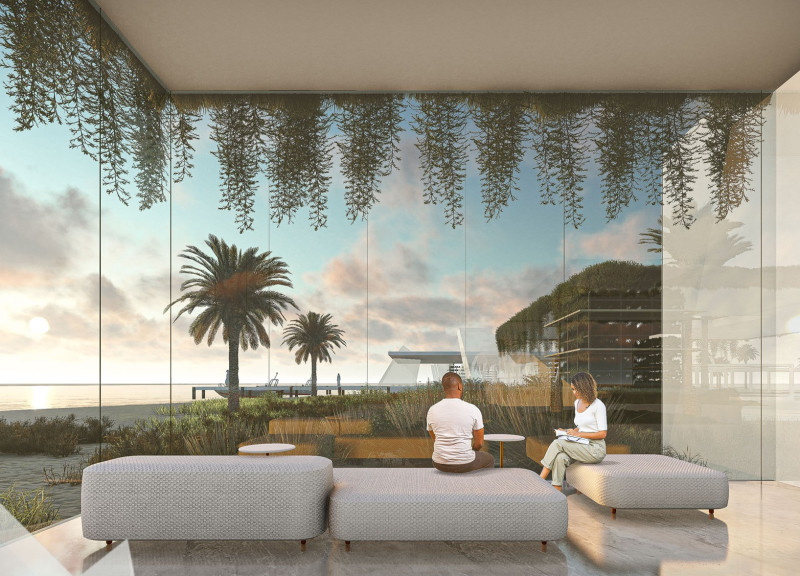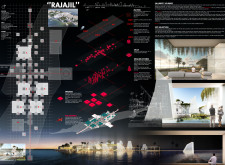5 key facts about this project
At the heart of this project lies a carefully curated framework that interweaves the elemental aspects of existence: Spirit, Water, Air, and Earth. Each of these elements plays a pivotal role in shaping the experience of the space, creating a balance that supports both individual and communal healing processes. The design features a matrix that not only serves as a guiding philosophy but also translates into the organization of functional areas that cater to diverse activities and emotional needs.
The project is characterized by a series of distinct yet interconnected spaces termed "organs" and "cells." These terms highlight the functional intent behind the architectural design, where each organ represents a significant area of activity, such as a library or meditation space, aimed at promoting personal reflection and community engagement. Conversely, the cells act as versatile units that accommodate varying activities and interactions, providing flexibility within the overall design.
One of the unique aspects of "RAJAJIL" is its intentional use of natural materials, which foster a sense of belonging and tranquility. Elements such as concrete for structural integrity, glass for transparency and light, and wood for warmth and tactile engagement are expertly combined. The design also integrates water features, resonating with the project's emphasis on emotional healing and the calming effects of water.
The architectural design effectively blurs the lines between indoor and outdoor spaces, allowing natural light to permeate the interiors while offering views that connect users with the beauty of the coastal landscape. This seamless interaction with nature is more than aesthetic; it is a fundamental part of the project’s ethos, underpinning its goal of creating a sanctuary that promotes well-being.
The project emphasizes community by designing public spaces that encourage social interaction and shared experiences. The layout facilitates gatherings and collective activities, reinforcing the idea that healing is often a communal process. The careful consideration of spatial organization ensures that users can navigate the environment intuitively, finding solace in both private and public spaces.
Furthermore, the geographical setting of "RAJAJIL" contributes significantly to its architectural narrative. Nestled along a coastal area, the design leverages the surrounding natural features to enhance the user experience. This thoughtful integration not only respects the local environment but also enriches the project's functionality by fostering a profound sense of place.
The project stands out for its methodical approach to architecture, where design decisions are informed by the intersection of physical space and emotional needs. This nuanced perspective enables a profound engagement with the elements of water and earth, creating an atmosphere conducive to reflection and healing.
With its focus on emotional wellness, community engagement, and a deep connection to nature, "RAJAJIL" represents a contemporary approach to architectural design. It transcends traditional notions of space, evolving into a living entity that nurtures both individual and collective experiences.
Readers interested in delving deeper into the architectural significance of "RAJAJIL" are encouraged to explore its architectural plans, sections, and design iterations. By examining these elements in detail, one can appreciate the thoughtful integration of concepts and the unique architectural ideas that define this compelling project.























